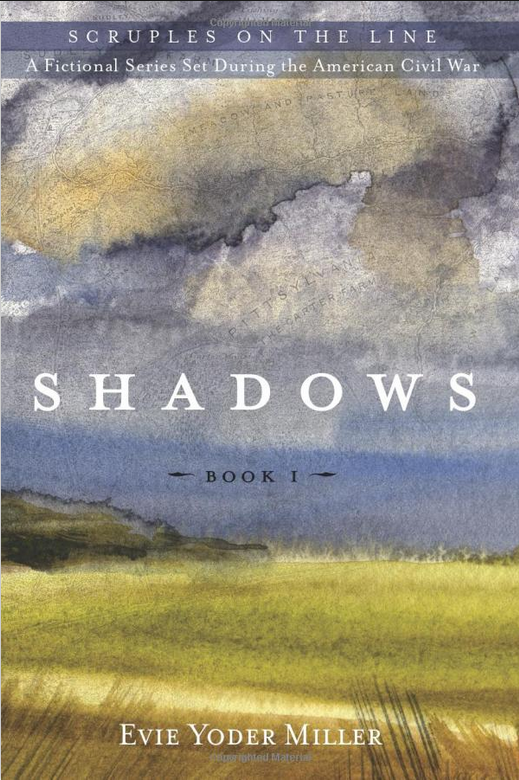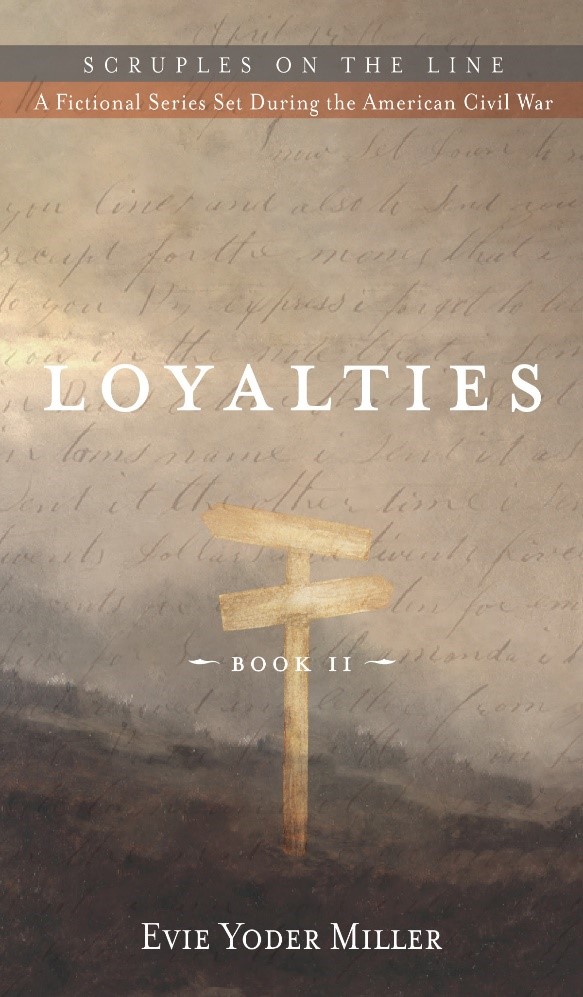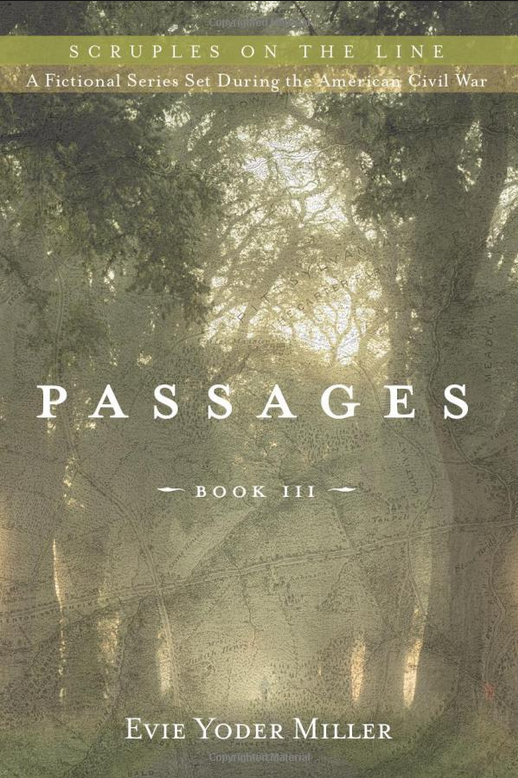Scruples
I have been mostly silent in terms of this blog for the past two months. It seems life had conspired to rush me from one kind of deadline to another, making me wonder whether I should retire from retirement in order to sit and put my feet up with a good book and a cup of coffee.

Well . . . I did read a few books in these months, among them a historical fiction trilogy, the series titled Scruples on the Line, written by my good friend Evie Yoder Miller.
Evie and I learned to know each other years ago in Harlan, Kentucky as we observed our respective two-year-olds navigate the world of friendship. We both lived in a small housing development on the bottom land along “Catern’s Crick” (Catron’s Creek), our houses separated by the railroad tracks used to carry a daily load of coal from a mine up the “holler” to a larger rail line. We attended the same church, shared family meals, and spent endless hours talking. Evie was writing even then, but I was just trying to figure out who I was and what I wanted to do with my life.
Since those days our children have grown and have children considerably older than our children were when they first met. Evie and I have grown and changed as well, both going to graduate school—she studying English, me theology and psychology. Evie has published several books in the past, but this spring we found ourselves both moving through the publishing process in tandem, even using the same publishing company, Wipf and Stock. In many ways it was like sharing pregnancies and comparing notes along the way, with me asking most of the questions about this process that was completely new to me. Her “triplets” have come out over a period of a year or slightly more while my one volume appeared between her second and third ones. If you have been reading my blog, you know all about mine. Now I’d like to introduce you to her three.
Scruples on the Line is set at the time of the American Civil War and portrays the lives of Mennonite, German Baptist (Church of the Brethren), and Amish individuals and their families living in five communities from the Shenandoah Valley to Iowa. The stories are narrated by five people ranging from a young girl to an elderly bishop, each of them representing one of the communities. The main characters, along with their families, are drawn as complex, imperfect people that I found myself identifying with—David’s sense of inadequacy, Fretz’ restless search for something beyond his immediate community, Betsy’s anxiety about the issues she couldn’t really understand, Esther’s concern for her children, Jacob’s dismay at change.
Book I, Shadows, starts just before the Civil War begins as people face the initial dismay that the rumors and hints of war bring, along with the dawning realization of the dilemmas they could face as pacifists. The mood of the book is one of foreboding, of shadows rising, of impending possible disaster, balanced by the hope that war would be short-lived.


In Book II, Loyalties, the country is deeply into war, and there is no escaping its reality. As I read, I felt the alternate hope and despair of the characters while they watched one side gain and then the other. Reading it as I have, so many years after the war, I found it hard to remember that the outcome of the war was not a foregone conclusion. However, Evie does an excellent job, through her characters, of keeping us in the story, facing an unknown outcome.
Another way I felt present in the story was that places in the Shenandoah Valley, which are named in the books, are familiar to me—the towns of Harrisonburg, Broadway, New Market, Dayton and others. Even though these places look much different now, I can easily picture their location and the surrounding countryside. I know the Valley Pike (Route 11) and have driven the road from Broadway to Lost River. Names and places are also familiar—Dale Enterprise, Linville Creek, Cootes Store, Brock’s Gap. Although the old building is no longer standing, I have attending meetings at Weaver’s Church, and I’ve been in Elder John Kline’s house and seen the partition that could go up to enlarge the room for church services. And I have ancestors who hid or fled to West Virginia to escape being drafted into the army. These stories feel close to home.
Book III, Passages, takes the now familiar characters through the last awful year of the war, much of it focused on the almost total destruction of the farms in the Shenandoah Valley of Virginia. This was the hardest part to read. The exquisite, telling details of daily life that Evie uses helped me feel the physical reality of the war’s hardships, and her characters’ inner thought worlds helped me appreciate the moral complexities brought about by the conflict.

I was impressed by the vast amount of research required to portray this period of history, from the vast swirl of political movements, to military dynamics, denominational maneuverings, and the smallest aspects of daily life. All these made the story feel authentic and drew me in. Evie used the main characters skillfully to create a multidimensional world and to shine a light on many facets of the war. I felt as if I were reading through a kaleidoscope, each chapter a turn to a new pattern, each as rich as the last. I was also struck by the parallels between then and now. One hundred sixty years later we are still struggling with the conflicts that were far from settled in that horrific and costly war.
While these are not a fun, beach-read series of books, I highly recommend them. They call to remembrance a time of our country’s history that we do well to remember and learn from. And they remind me that people can emerge hopeful, even from disaster.
Evie’s books are available at Wipf and Stock, Barnes and Noble, and Amazon.